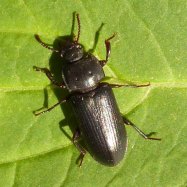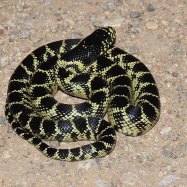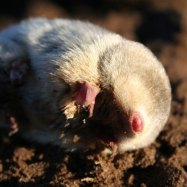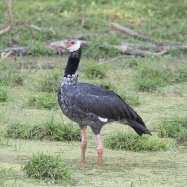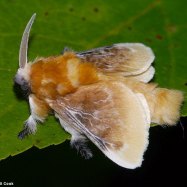
Terrier
The length of Terriers varies depending on the specific breed. They can range from small Terriers that are around 9 inches in height to larger Terriers that can reach up to 18 inches in height.
Terriers are beloved companion animals found in homes all over the world. From tiny 9-inch breeds to larger 18-inch ones, their length can vary depending on the type. With a compact and muscular body shape, these canines belong to the Canidae family and thrive in both urban and rural environments. #Terriers #CompanionAnimals #Canidae
Animal Details Summary:
Common Name: Terrier
Kingdom: Animalia
Habitat: Terriers can adapt to a variety of habitats, including urban environments, farms, and open countryside. They are primarily kept as companion animals and are often found in homes and apartment buildings.
The Terrier: A Loyal and Energetic Companion
The Terrier is a beloved breed of dog that has captured the hearts of many dog lovers around the world. With their compact size, energetic nature, and unwavering loyalty, Terriers are a popular choice for families and individuals alike. But what exactly makes this breed so special? In this article, we will delve into the fascinating world of Terriers and explore their unique characteristics, habits, and history.Meet the Terrier: A Member of the Canidae Family
The Terrier, scientifically known as Canis lupus familiaris, belongs to the Animalia kingdom, Chordata phylum, Mammalia class, and Carnivora order Terrier. They are part of the Canidae family, which also includes wolves, foxes, and coyotes. However, unlike their wild cousins, Terriers have been domesticated and have been bred specifically for companionship and hunting purposes.A Flexible Habitat: Terriers Can Adapt Anywhere
One of the most interesting features of the Terrier breed is their ability to adapt to different environments. These dogs are often found in various habitats, including urban areas, farms, and open countryside. This adaptability makes Terriers an ideal companion for those living in apartments and city dwellings, as well as for those in more rural settings.Nourishing the Terrier: A Carnivore’s Diet
As natural carnivores, Terriers thrive on a diet that consists mainly of meat. Historically, many Terrier breeds were used for hunting small animals, and their diet would consist of prey that they caught. Today, most Terriers are fed commercial dog food, which provides them with a balanced diet. However, it's important to note that Terriers have high energy levels and require regular exercise, so a healthy and well-balanced diet is crucial for their well-being Tiger Rattlesnake.A Worldwide Distribution of Terriers
Terriers can be found in various parts of the world, including Europe, North America, and Australia. Different Terrier breeds have originated from different regions, and some are more common in certain countries. For example, the Jack Russell Terrier originated in England, the Scottish Terrier in Scotland, and the West Highland White Terrier in Scotland as well. No matter where you are, chances are you will come across a Terrier at some point.A Multitude of Colors: Terrier’s Unique Coloration
Terriers come in a variety of colors, including black, white, brown, tan, brindle, and combinations of these colors. The coloration can vary depending on the specific breed, and some Terriers have markings or patches of different colors. These variations in color add to the charm and individuality of each Terrier.A Compact and Muscular Body: Terrier’s Physical Traits
One of the most noticeable features of Terriers is their compact and muscular body shape. They are small to medium-sized dogs with a sturdy build, making them agile and able to navigate different terrains. There are many different breeds of Terriers, and each one may have slight variations in body shape and size.Size Matters: The Length of Terriers
The length of Terriers varies depending on the specific breed. Some Terriers are smaller and measure around 9 inches in height, while others can be larger and reach up to 18 inches in height. Despite their size, Terriers are energetic and highly active, making them a joy to watch as they run and play.The Terrier’s History: From Hunters to Companions
Terriers have a rich history, and many breeds of the Terrier family have been around for centuries. These dogs were originally bred for hunting and were used to catch rats, mice, and other small rodents. Their small size and agility made them perfect for the job. As time passed, Terriers were also used for other purposes such as guarding and companionship. Today, Terriers are primarily kept as companion animals and are known for their loyal and affectionate nature.The Perfect Human Companions
Terriers are highly sociable and crave human interaction. They form strong bonds with their owners and are known for their unwavering loyalty. This makes them the perfect companions for individuals and families alike. Despite their small size, Terriers have big personalities and are often described as spunky, playful, and loving.Characteristics and Habits of Terriers
In addition to their loyalty and affectionate nature, Terriers have many other unique characteristics and habits. These dogs are intelligent and have a strong prey drive, so they require consistent training and guidance. Terriers are also known to be vocal and can have a lot to say, often using their distinctive barks to communicate with their owners.Terriers are highly active and require plenty of daily exercise to release their energy. This can be in the form of walks, runs, or playtime. As natural hunters, they also love to dig, so it's essential to provide them with designated areas where they can safely indulge in this behavior.
Caring for Your Terrier: Tips and Tricks
If you are considering adding a Terrier to your family, it's essential to understand their specific needs and care requirements. Here are some tips and tricks to help you provide the best care for your Terrier:- Regular exercise: As mentioned, Terriers are highly energetic and require daily exercise to stay healthy and happy.
- Training and socialization: Starting early with training and socialization is crucial for Terriers. They thrive on mental stimulation and require consistent guidance to become well-mannered and well-behaved companions.
- Grooming: Terriers have a double coat, and regular grooming is necessary to keep their coat in top condition. This includes brushing, bathing, and occasional trimming.
- Dental care: Regular teeth brushing and yearly dental check-ups are essential for Terriers to maintain good oral health.
- Proper nutrition: As mentioned, Terriers require a well-balanced and nutritious diet to keep up with their high energy levels. Consult with your veterinarian to ensure you are providing the best food for your Terrier.
In Conclusion
The Terrier is a unique and lovable breed that has captured the hearts of dog lovers around the world. From their adaptable nature to their energetic personality, Terriers have a lot to offer as companions. Whether you live in a busy city or a quiet countryside, Terriers are sure to make a loving addition to your home. So, if you are looking for a loyal, energetic, and affectionate companion, consider welcoming a Terrier into your family.

Terrier
Animal Details Terrier - Scientific Name: Canis lupus familiaris
- Category: Animals T
- Scientific Name: Canis lupus familiaris
- Common Name: Terrier
- Kingdom: Animalia
- Phylum: Chordata
- Class: Mammalia
- Order: Carnivora
- Family: Canidae
- Habitat: Terriers can adapt to a variety of habitats, including urban environments, farms, and open countryside. They are primarily kept as companion animals and are often found in homes and apartment buildings.
- Feeding Method: Terriers are carnivores and primarily eat meat. Many Terrier breeds were originally bred for hunting small animals, so their diet consisted of small prey. Nowadays, they are typically fed commercial dog food that provides a balanced diet.
- Geographical Distribution: Terriers are found in various parts of the world, including Europe, North America, and Australia. Different Terrier breeds have originated from different regions, and some are more common in certain countries.
- Country of Origin: Terriers have originated from various countries around the world. For example, the Jack Russell Terrier originated in England, the Scottish Terrier in Scotland, and the West Highland White Terrier in Scotland.
- Location: Terriers can be found in many countries as they are popular companion animals. They are often found in homes and can be seen in urban environments as well as rural areas.
- Animal Coloration: Terriers come in a variety of colors, including black, white, brown, tan, brindle, and combinations of these colors. The coloration can vary depending on the specific breed.
- Body Shape: Terriers have a compact and muscular body shape. They are small to medium-sized dogs with a sturdy build. Different breeds may have slight variations in body shape and size.
- Length: The length of Terriers varies depending on the specific breed. They can range from small Terriers that are around 9 inches in height to larger Terriers that can reach up to 18 inches in height.

Terrier
- Adult Size: The adult size of Terriers can range from small to medium. Some Terrier breeds are smaller, weighing around 10-15 pounds, while others can weigh up to 30-40 pounds.
- Average Lifespan: The average lifespan of Terriers can vary depending on the specific breed and individual health. On average, Terriers can live between 10-15 years.
- Reproduction: Terriers reproduce sexually, with males and females mating to produce offspring.
- Reproductive Behavior: Terriers typically have a breeding season, during which the females come into heat and are receptive to mating. The males may display courtship behaviors to attract a mate.
- Sound or Call: Terriers can make a variety of sounds and calls, including barking, howling, growling, and whimpering. They use these vocalizations to communicate with their owners and other animals.
- Migration Pattern: Terriers, as companion animals, do not have a specific migration pattern. They primarily stay within their home environment and do not migrate long distances.
- Social Groups: Terriers are social animals and can form social bonds with their owners and other animals. They can live in households with other dogs and may enjoy socializing with other dogs in dog parks or during walks.
- Behavior: Terriers are known for their energetic and lively behavior. They are active dogs that require regular physical exercise and mental stimulation. They are often described as feisty, fearless, and independent.
- Threats: Terriers, as domesticated dogs, face similar threats to other companion animals, such as diseases, accidents, and old age. They may also be vulnerable to certain breed-specific health issues.
- Conservation Status: Terriers, being domesticated dogs, do not have a conservation status. However, some rare Terrier breeds may have a low population and be considered endangered.
- Impact on Ecosystem: Terriers, as companion animals, do not have a significant impact on ecosystems. However, their presence in urban areas can sometimes disturb local wildlife, such as small mammals and birds.
- Human Use: Terriers are primarily kept as companion animals. They are known for their loyalty and affection towards their owners. Some Terrier breeds are also used for specific tasks, such as hunting or performing tricks in dog shows.
- Distinctive Features: Terriers are known for their distinctive features, such as their small size, wiry coats, and erect ears. Different breeds may have specific features, such as the long legs of the Jack Russell Terrier or the bushy eyebrows of the Schnauzer.
- Interesting Facts: 1. Terriers were originally bred for hunting small animals like rodents and foxes. 2. Some Terrier breeds were used for rat-catching in coal mines. 3. The word 'Terrier' comes from the Latin word 'terra', which means earth or ground, reflecting their ability to dig and hunt underground. 4. Terriers are often portrayed as animated and feisty characters in movies and TV shows.
- Predator: Terriers, being domesticated dogs, do not have natural predators. However, they may encounter threats from larger predators or aggressive animals in certain situations.

Canis lupus familiaris
The Terrier: A Feisty and Loyal Canine Companion
For centuries, the Terrier has been known as a small but fierce member of the canine family. With various breeds falling under this category, Terriers are versatile dogs that have won the hearts of many dog lovers. These dogs are known for their distinctive features, energetic behavior and unwavering loyalty towards their owners. In this article, we'll delve into the unique characteristics of Terriers and explore their role in the animal kingdom PeaceOfAnimals.Com.Adult Size and Average Lifespan
Terriers come in a variety of sizes, ranging from small to medium. While some Terrier breeds can weigh as little as 10-15 pounds, others can grow up to 30-40 pounds. This variety in size is due to the varying breeds of Terriers, each with its unique characteristics. For example, the tiny Yorkshire Terrier, or "Yorkie," is a popular choice among small dog lovers, while the Staffordshire Bull Terrier is a larger, more muscular breed often used for bull-baiting in the past.
The average lifespan of Terriers can vary depending on the specific breed and individual health. On average, Terriers can live between 10-15 years, making them a relatively long-lived dog breed. However, this lifespan can also be affected by factors such as genetics, diet, and overall care. Responsible ownership and routine visits to the veterinarian are essential in ensuring a Terrier's health and longevity.
Reproduction and Reproductive Behavior
Like most mammals, Terriers reproduce sexually, with males and females mating to produce offspring Tsetse Fly. Their reproductive behavior is influenced by their breeding season, during which the females come into heat and are receptive to mating. The males may display courtship behaviors to attract a mate, similar to other dog breeds.
Sound or Call
Terriers are vocal dogs that can make a variety of sounds and calls. They may bark, howl, growl, or whimper to communicate with their owners and other animals. Barking is one of the most common forms of vocalization in Terriers, and it is their way of expressing excitement, alertness, or frustration. Some Terrier breeds are more vocal than others, while some have a unique trait of "talking," making a series of yips and barks that sound like they are trying to communicate with their owners.
Migration Pattern
Unlike their wild ancestors, Terriers, as companion animals, do not have a specific migration pattern. They primarily stay within their home environment and do not migrate long distances. However, some breeds, such as the Jack Russell Terrier, were initially bred for hunting and chasing prey, making them agile and energetic dogs that enjoy exploring new environments.
Social Groups and Behavior
Terriers are highly social animals that can form strong bonds with their owners and other animals. They are known for being affectionate and loyal dogs, making them great family pets. Terriers can live in households with other dogs, and some breeds, such as the West Highland White Terrier, are known to get along well with cats.
However, Terriers are also known for their feisty and independent behavior. Their energetic nature requires regular physical exercise and mental stimulation to prevent them from becoming bored or destructive. Terriers are intelligent and need consistent training and socialization to become well-behaved companions. It is essential to provide them with outlets for their energy, such as daily walks and playtime, to keep them physically and mentally healthy.
Threats and Conservation Status
As domesticated animals, Terriers face similar threats to other companion animals, such as diseases, accidents, and old age. They may also be vulnerable to certain breed-specific health issues, such as hip dysplasia and skin allergies. Responsible ownership, proper healthcare, and early detection of any health concerns are crucial in ensuring the well-being of Terriers.
Since Terriers are domesticated dogs, they do not have a conservation status. However, certain rare breeds may have a low population and be considered endangered. Breeding programs and responsible ownership can help maintain the gene pool of these endangered Terrier breeds.
Impact on Ecosystem and Human Use
As companion animals, Terriers do not have a significant impact on ecosystems. However, their presence in urban areas can sometimes disturb local wildlife, such as small mammals and birds. It is essential for pet owners to be mindful of their Terrier's behavior in public spaces and ensure they do not harm other animals or their habitats.
Terriers are primarily kept as companion animals, known for their loyalty and affection towards their owners. Their small size, affectionate nature, and intelligence make them popular choices for both families and individuals. They are also known for their specific abilities, such as hunting rodents and performing tricks, making them versatile and unique dogs. Some Terrier breeds are still used for specific tasks such as hunting, while others participate in dog shows and agility competitions, showcasing their talents and intelligence.
Distinctive Features and Interesting Facts
Terriers are known for their unique features, including their small size, wiry coats, and erect ears. Different breeds may have specific physical characteristics, such as the long legs of the Jack Russell Terrier or the bushy eyebrows of the Schnauzer. Despite their size, Terriers are sturdy and muscular dogs with a strong prey drive, reflecting their hunting origins.
Terriers have a rich history and many interesting facts that make them even more beloved. They were originally bred for hunting small animals like rodents and foxes, using their sharp vision and keen sense of smell to track their prey. Some breeds, such as the Yorkshire Terrier, were also used for rat-catching in coal mines, a task that required fearlessness and determination.
The word "Terrier" comes from the Latin word "terra," which means earth or ground. It reflects their ability to dig and hunt underground, a skill that was vital in their hunting work. This characteristic is still prevalent in many Terrier breeds today, making them skilled diggers that may even create tunnels in backyards.
Terriers are often portrayed as animated and feisty characters in movies and TV shows, capturing their energetic and lively nature. They have even inspired famous literary works, such as the beloved novel "The Call of the Wild" by Jack London, which features a fearless Terrier named Jack.
Predators and Conclusion
Being domesticated animals, Terriers do not have natural predators. However, they may encounter threats from larger predators or aggressive animals in certain situations. As responsible pet owners, it is important to always keep an eye on our Terriers and protect them from any potential threats.
In conclusion, Terriers are fascinating dogs that have captured the hearts of many dog lovers with their unique features and feisty personality. As a domesticated breed, they have adapted to life with humans and have become beloved companions in households all around the world. With proper care and love, Terriers can live long and healthy lives, making them a cherished part of many families.

The Terrier: A Loyal and Energetic Companion
Disclaimer: The content provided is for informational purposes only. We cannot guarantee the accuracy of the information on this page 100%. All information provided here may change without prior notice.


